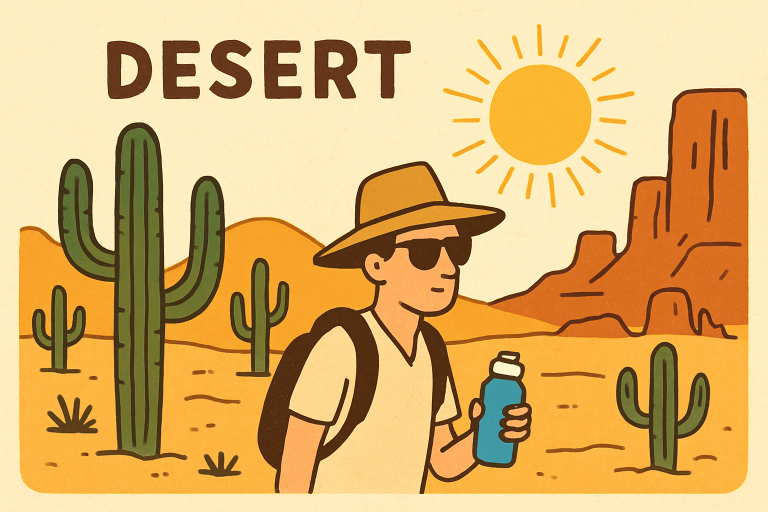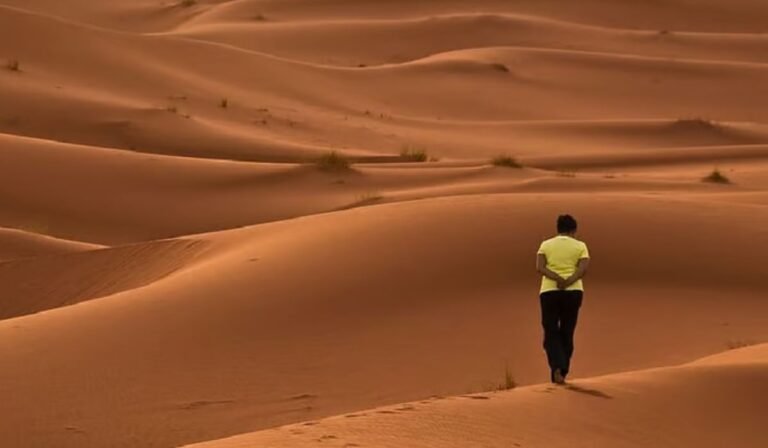Desert destinations captivate travelers with their majestic vistas, otherworldly silence, and opportunities for adventure that are unlike any other environment. Yet, these arid landscapes demand careful preparation and respect for your safety and the delicate ecosystems that thrive there.
Whether planning a solo hike, a guided tour, or a scenic drive, partnering with destination management companies Arizona ensures a well-organized, safe, and enriching experience. Their local expertise, logistic support, and sustainable tourism practices make exploring the Southwest deserts enjoyable and responsible.
Travelers heading to the southwestern United States or any of the world’s famous deserts benefit from embracing a safety-first and eco-conscious mindset. The open spaces, dramatic color palettes, and rare flora and fauna create memories to cherish, but these treasures also depend on responsible tourism to survive. This guide covers everything you need to prepare, protect yourself, and explore deserts with minimal impact.
Preparing for Your Desert Adventure
Proper preparation is the foundation of any safe trip into the desert. Always let a friend, family member, or lodge staff know your detailed itinerary and estimated return time. Being clear about your plans means that, in the rare event that something goes wrong, rescuers have a solid starting point. Before departing, check local weather conditions and heat advisories—the desert climate can fluctuate drastically, and storms or heat waves can present serious danger. If possible, plan outings in the early morning or late afternoon to avoid peak heat.
Pack a lightweight emergency kit with a whistle, reflective blanket, basic first aid supplies, snacks, and a fully charged mobile phone with a backup battery. Educate yourself about the unique terrain and specific regional hazards so you can act swiftly if conditions change. For help organizing group activities and logistics, expert destination management companies can tailor safety checklists and emergency strategies for any size group or itinerary in the desert.
Staying Hydrated
Staying hydrated isn’t just important—it’s a matter of survival in desert climates. Carry more water than you think you’ll need, generally at least one gallon (4 liters) per person daily. For strenuous activities or hotter-than-average conditions, increase your supply. Portable water filters or purification tablets are wise additions if you’ll be venturing deep into remote terrain.
Monitor your hydration by watching for signs of dehydration, such as dry mouth, dizziness, or infrequent urination. Avoid caffeine and alcohol, both of which can accelerate dehydration. Remember that children, pets, and older adults are especially vulnerable to water loss and should be monitored closely throughout your journey.

Sun Protection
The sun’s rays are fierce in desert habitats, and overexposure can quickly lead to sunburn, dehydration, or heatstroke. Wear loose-fitting, light-colored clothing made of moisture-wicking fabric to help regulate body temperature while protecting your skin.
Wear a wide-brimmed hat and high-quality sunglasses to shield your face and eyes. Apply (and frequently reapply) sunscreen with a high SPF rating—even on cloudy days, UV radiation is intense. Plan your outdoor activities for cooler times of the day, and seek shade whenever possible to reduce your risk of heat-related ailments.
Navigating the Desert
Desert terrain can be disorienting, and vast spaces often lack distinct landmarks. Always carry a GPS device and a paper map labeled with key routes and water sources. Learn how to use traditional navigation methods—such as compass bearings—before you leave, as batteries can fail or technology can malfunction.
Mark your trails with visible yet eco-friendly markers or use a hiking GPS app with offline maps. Suppose you’re participating in a guided tour or event. In that case, coordinators can assist with up-to-date navigation tools and advice for avoiding restricted or hazardous areas, ensuring safe and smooth exploration.
Wildlife Awareness
The desert is teeming with unique life forms, from elusive reptiles and small mammals to resilient birds and insects. While encountering wildlife is part of the desert’s magic, it’s important to keep your distance for your safety and theirs.
Do not reach into crevices or under rocks, where snakes or scorpions may be sheltering. Scan your path ahead whenever hiking and never attempt to feed or approach wild animals. If you respect their space, most wildlife will avoid you, making your mutual experience safer and stress-free.
Vehicle Preparation
If your desert journey involves off-road driving or long stretches through remote areas, thorough vehicle checks are crucial. Inspect tire pressure and tread, and make sure your spare is usable. Top off fluids such as oil and coolant, and travel with a full gas tank since service stations are sparse.
A basic toolkit—including a jack and lug wrench—and extra water for your engine are must-haves. Consider carrying traction mats or a shovel in case you become stuck. For more detailed advice on safety steps and preparation, consult resources provided by reputable guides like the National Park Service’s Desert Driving Safety tips.
Practicing Sustainable Tourism
Desert environments are fragile—even small human actions can harm their plants and animals. Always practice Leave No Trace principles by packing out all waste, minimizing campfire use, and sticking to established trails. Never damage or pick plants, which may take years to recover or grow.
Respect wildlife by keeping noise to a minimum and maintaining safe viewing distances. Responsible visitors help preserve these precious lands so future generations can enjoy their beauty and serenity. Explore resources on sustainable tourism in the Sahara for additional tips on leaving a lasting positive impact.
By following these guidelines, desert travelers not only safeguard their own lives but also contribute to the resilience and vitality of desert ecosystems. With thoughtful planning, the right gear, and a deep respect for nature and culture, adventures in the desert can inspire, transform, and educate—all while leaving only gentle footprints across the sands.
